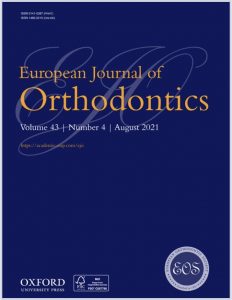Publications

Biomechanical properties of the lips in a pre-orthodontic sample of adolescents and young adults
Authors: Danielle Hodgkinson 1, Sabarinath Prasad 1, Joseph S. Antoun 1, Li Mei 1, Mauro Farella 1, 2
Affiliations:
- Discipline of Orthodontics, Faculty of Dentistry, University of Otago, Dunedin, New Zealand
- Department of Surgical Science, University of Cagliari, Italy
Journal: European Journal of Orthodontics - April 2022, Volume 44, Issue 2, Pages 232-239 (DOI: 10.1093/ejo/cjab053)
-
Field & Applications:
- Medical
- Orofacial muscles
- Reliability
Objectives: To assess biomechanical properties of the lip muscles and to investigate thei relationship with sex, age, body mass index (BMI), and cephalometric variables.
Materials and methods: Demographic information and BMI were collected from 83 study participants seeking orthodontic treatment at the University of Otago. Tone, stiffness, and elasticity of the lip muscles were measured thrice at four different anatomical sites using a digital palpation device. To estimate method error, a duplicate set of measurements in a subsample of 20 participants was taken a week later. Sagittal and vertical cephalometric classifications were based on ANB and FMPA angles, respectively. Data were analysed using mixed models.
Results: Biomechanical properties of lip muscles were remarkably consistent both within and between different recording sessions. The lower lip had higher tone and stiffness than the upper lip. Both the upper and lower lip stiffness and tone were higher in females than in males, whereas upper lip elasticity was higher in males. Thinner upper lips had higher tone and were stiffer than thicker upper lips, whereas thinner lower lips were less elastic than thicker lower lips. Muscle tone and stiffness of both the upper and lower lips were lower in Class III than in Class I and Class II individuals. The upper lip of hyperdivergent individuals was less elastic than that of normodivergent and hypodivergent individuals, and stiffer than that of hypodivergent individuals.
Conclusions: The biomechanical properties of perioral soft tissues can be reliably measured and vary with anatomical site, sex, and cephalometric measurements.
Myotonometry is a reliable tool for measuring the biomechanical properties of the perioral soft tissues. Perioral soft-tissue properties are influenced by sex, craniofacial morphology, and cephalometric lip measurements, but not BMI. Stiffness and tone are higher in the lower lip than the upper lip. Females have higher lip stiffness and tone for both upper and lower lips, whereas males had higher upper lip elasticity. Lip tone and stiffness are lower in Class III malocclusions.
The upper lip of hyperdivergent individuals is slightly stiffer and more elastic than that of hypodivergent individuals. Myotonometric measurements in future longitudinal studies could enhance our understanding of the cause-effect relationships between malocclusion, orthodontic treatment, and perioral soft tissues.


